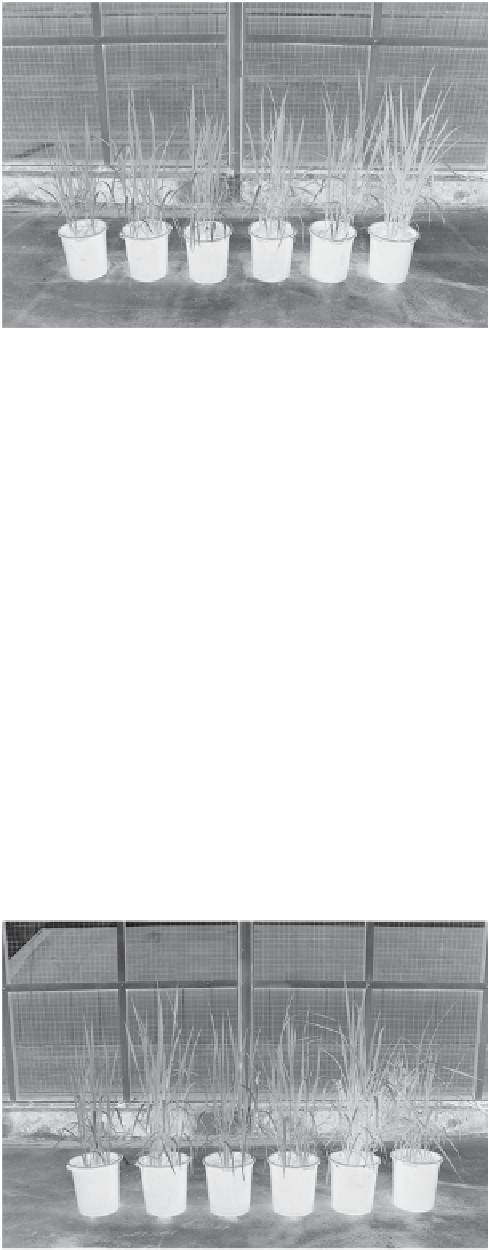Agriculture Reference
In-Depth Information
(NH
4
)
2
SO
4
0
100
150
400
50
300
mg kg
-1
FIGURE 6.14
Response of upland rice to N fertilization applied with ammonium sulfate.
activity (Daroub and Snyder, 2007). Daroub and Snyder (2007) also reported that the essentiality
of Ni as an essential nutrient was established in 1987. In 1992, the United States Department of
Agriculture, Agriculture Research Service added Ni to its list of essential plant nutrient elements
(Wood and Reilly, 2007). It essentially was also recognized by the American Association of Plant
Food Control Officials (AAPFCO), the umbrella organization that functions to govern and influence
regulation, labeling, ingredients, and amounts of elements in fertilizer products in the United States
(Terry, 2004). Ni is now listed on fertilizer labels in the United States, and commercial Ni fertilizer
products are now marketed (Wood and Reilly, 2007). The deficiency of Ni in crop plants is rarely
observed under field conditions. Even in controlled conditions, creating deficiency symptoms is dif-
ficult (Fageria, 2009).
Nickel deficiency causes severe disruption in N metabolism and other metabolic process (Brown
et al., 1990). Nickel stimulates proline biosynthesis in plants, which is responsible for osmotic bal-
ance in plant tissues (Salt et al., 1995; Singh et al., 2004). Nickel function in the utilization of
nitrogen translocated from roots to tops via guanidines or ureides that are subsequently used for
anabolic reactions in growing tissues (Welch, 1981). Simultaneous supplies of NO
3
-N and NH
4
-N
reduced Ni toxicity in sunflower, and growth was enhanced from added Ni (Zornoza et al., 1999).
Low-Ni plants became N deficient from lack of urease activity with a high accumulation of urea
but low tissue N (Gerendas and Sattelmacher, 1997). Figures 6.14 and 6.15 show upland rice growth
CO(NH
2
)
2
0
50
100
mg kg
-1
150
300
400
FIGURE 6.15
Response of upland rice to N fertilization applied with urea.

